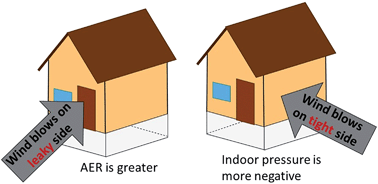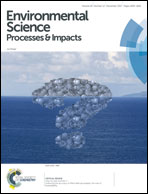Three-dimensional vapor intrusion modeling approach that combines wind and stack effects on indoor, atmospheric, and subsurface domains
Abstract
Vapor intrusion (IV) exposure risks are difficult to characterize due to the role of atmospheric, building and subsurface processes. This study presents a three-dimensional VI model that extends the common subsurface fate and transport equations to incorporate wind and stack effects on indoor air pressure, building air exchange rate (AER) and indoor contaminant concentration to improve VI exposure risk estimates. The model incorporates three modeling programs: (1) COMSOL Multiphysics to model subsurface fate and transport processes, (2) CFD0 to model atmospheric air flow around the building, and (3) CONTAM to model indoor air quality. The combined VI model predicts AER values, zonal indoor air pressures and zonal indoor air contaminant concentrations as a function of wind speed, wind direction and outdoor and indoor temperature. Steady state modeling results for a single-story building with a basement demonstrate that wind speed, wind direction and opening locations in a building play important roles in changing the AER, indoor air pressure, and indoor air contaminant concentration. Calculated indoor air pressures ranged from approximately −10 Pa to +4 Pa depending on weather conditions and building characteristics. AER values, mass entry rates and indoor air concentrations vary depending on weather conditions and building characteristics. The presented modeling approach can be used to investigate the relationship between building features, AER, building pressures, soil gas concentrations, indoor air concentrations and VI exposure risks.



 Please wait while we load your content...
Please wait while we load your content...